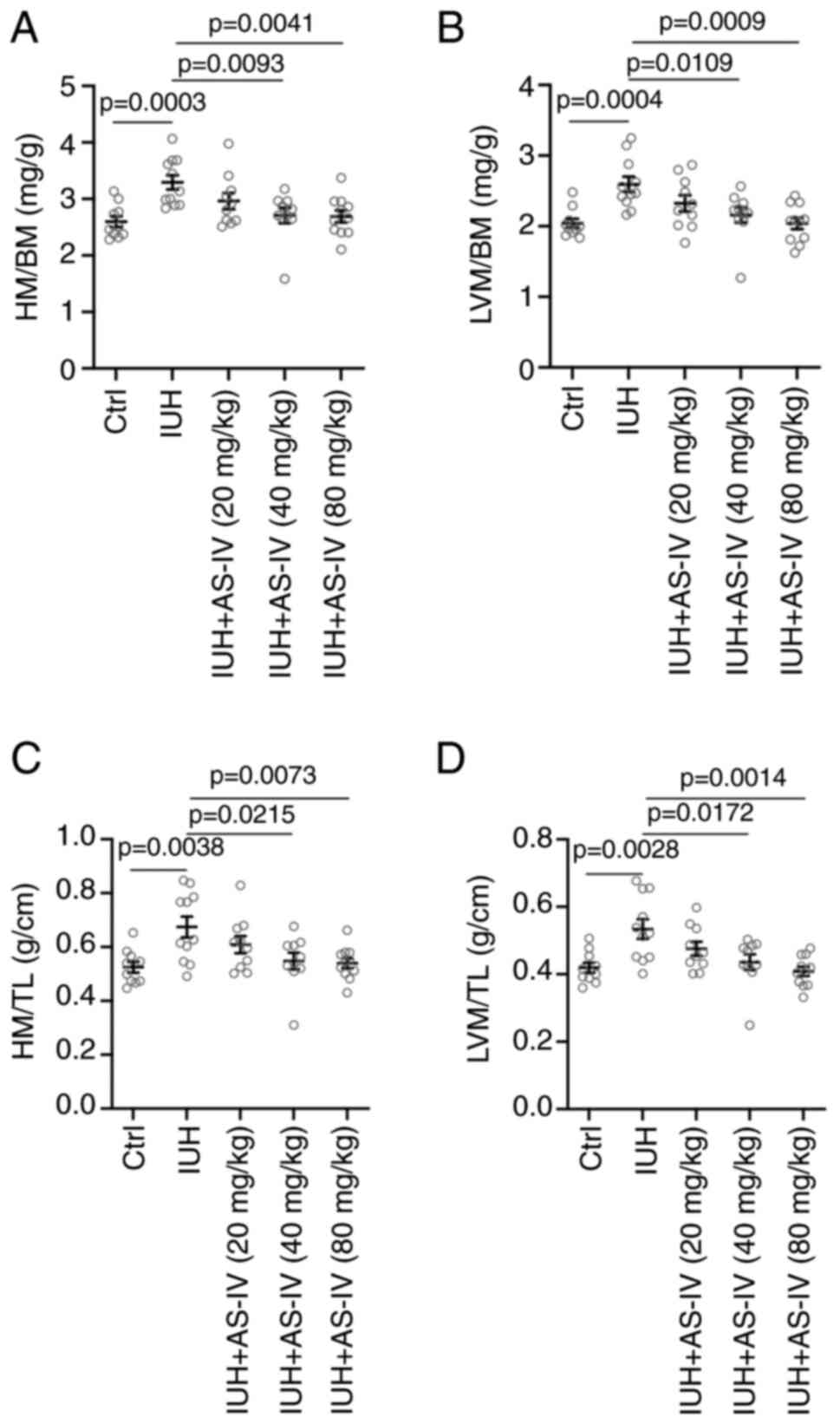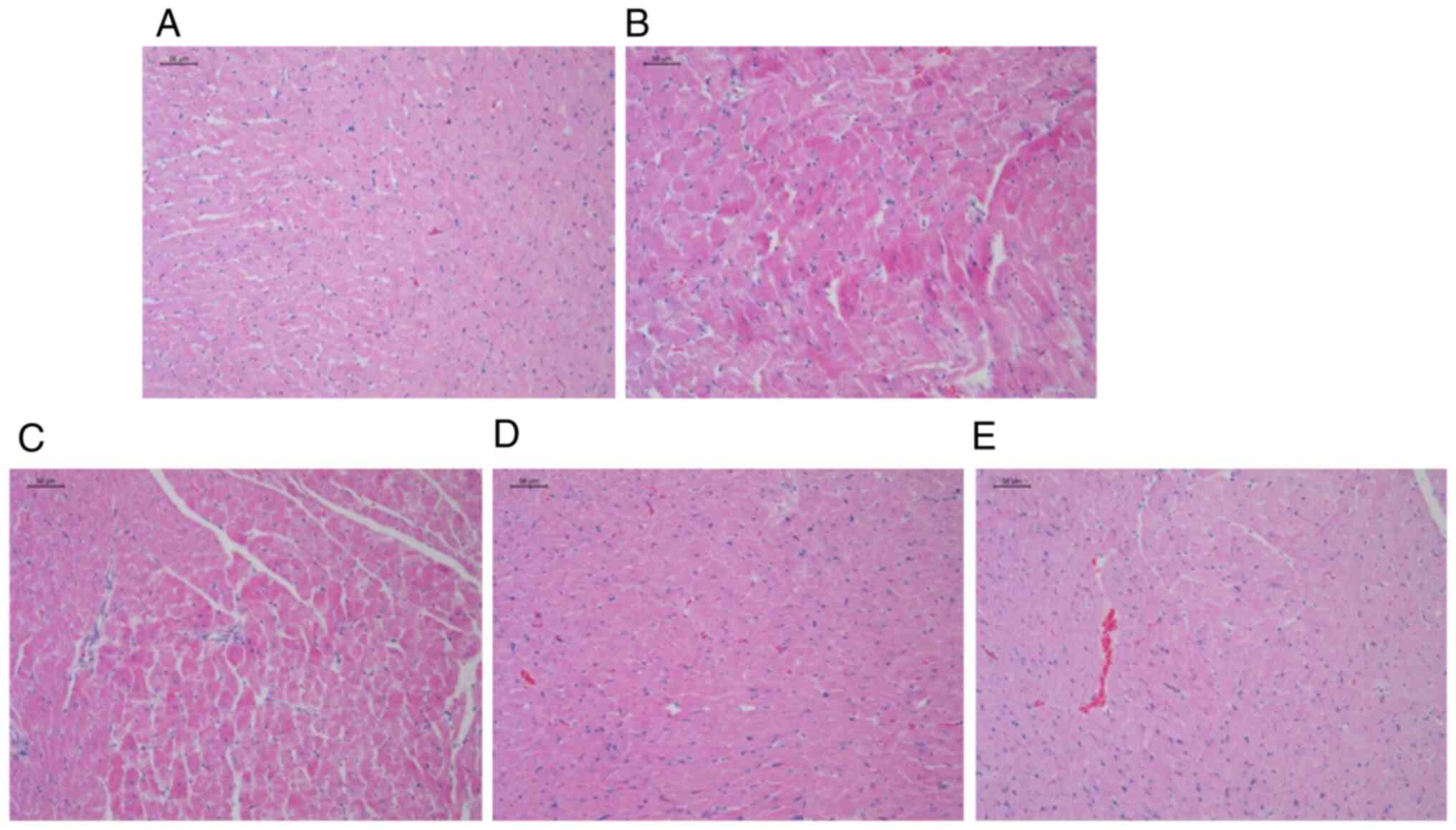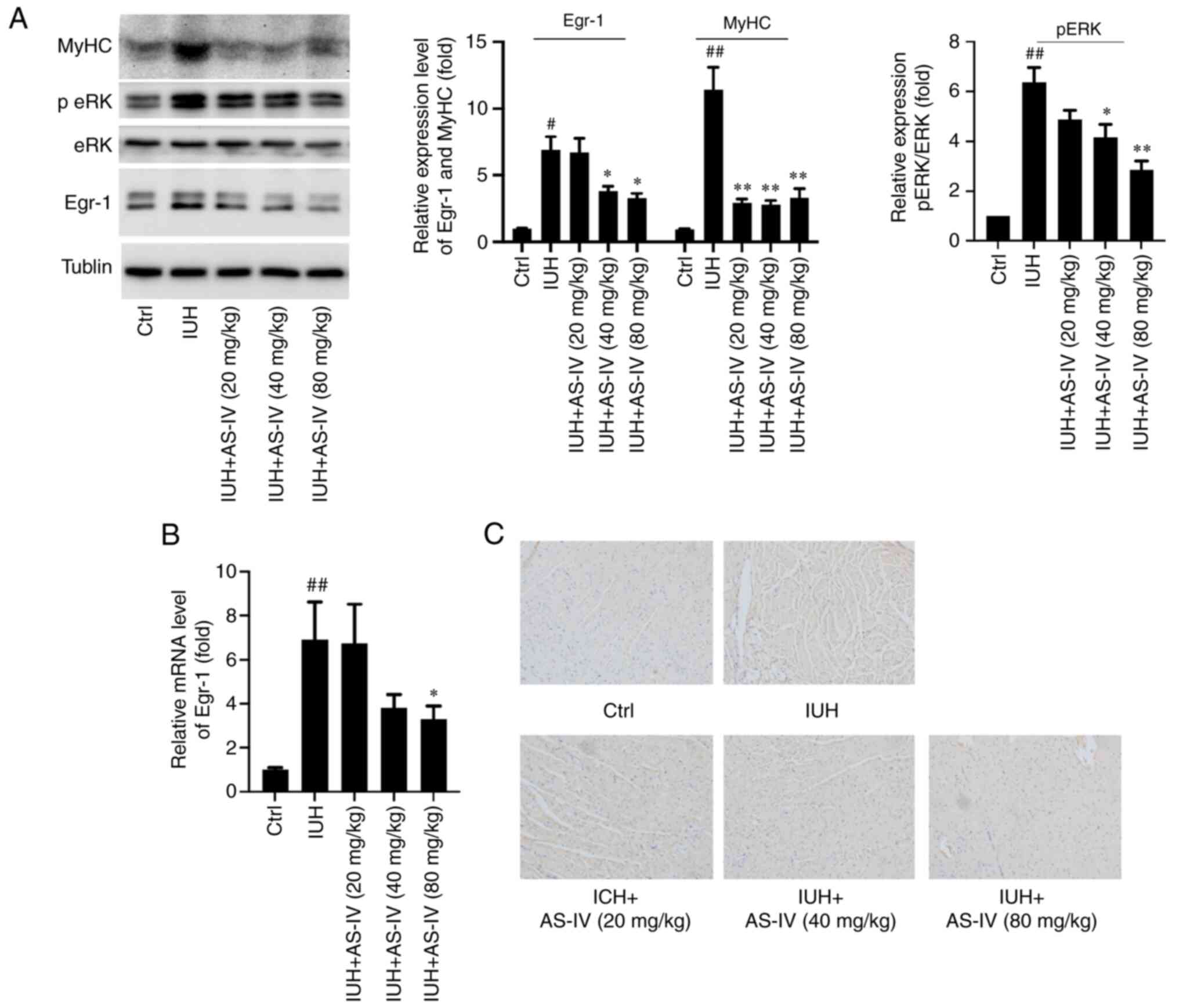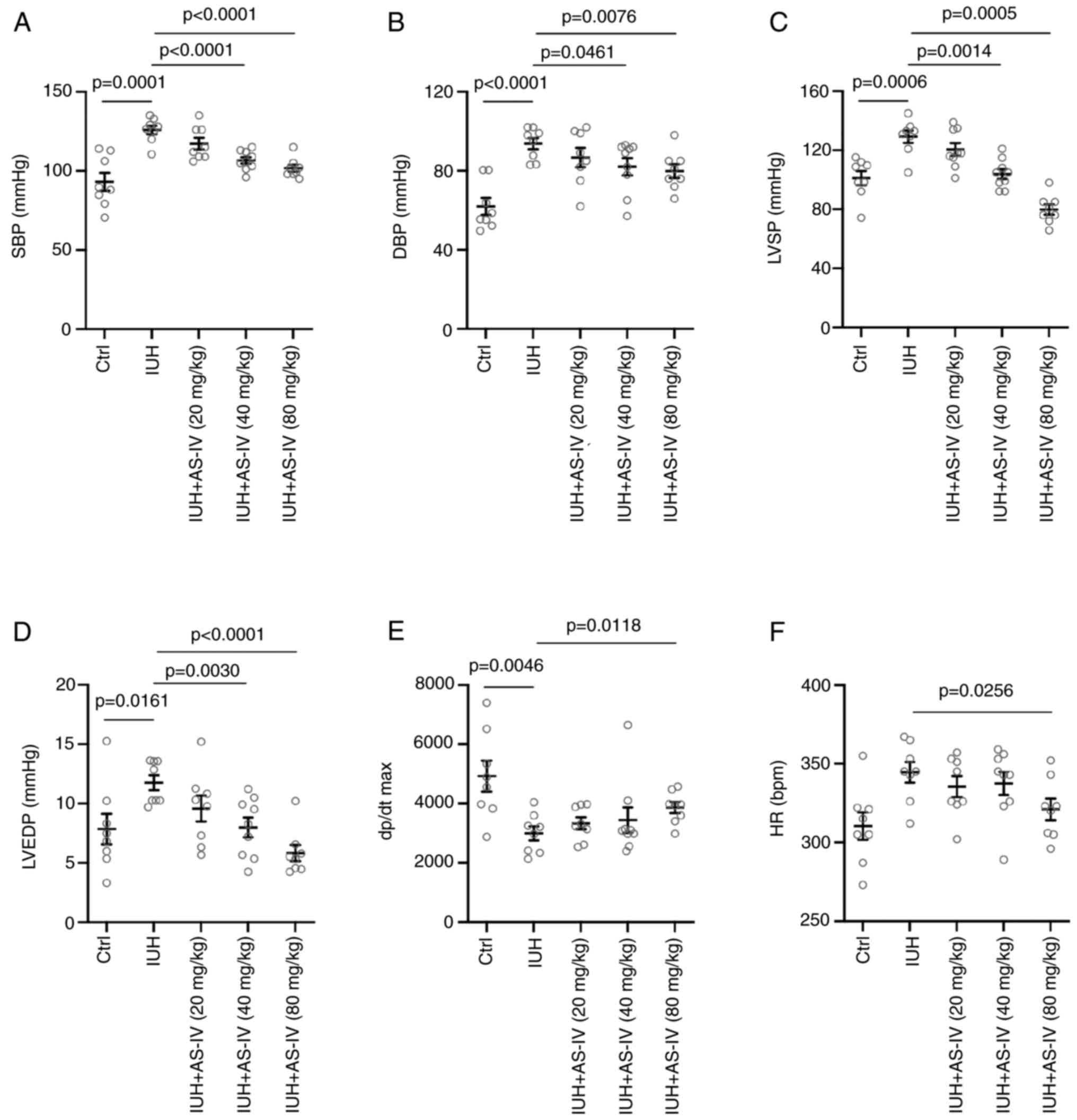|
1
|
Giussani DA: Breath of Life: Heart disease
link to developmental hypoxia. Circulation. 144:1429–1443.
2021.PubMed/NCBI View Article : Google Scholar
|
|
2
|
Rueda-Clausen CF, Morton JS and Davidge
ST: Effects of hypoxia-induced intrauterine growth restriction on
cardiopulmonary structure and function during adulthood. Cardiovasc
Res. 81:713–722. 2009.PubMed/NCBI View Article : Google Scholar
|
|
3
|
Zhang P, Ke J, Li Y, Huang L, Chen Z,
Huang X, Zhang L and Xiao D: Long-term exposure to high altitude
hypoxia during pregnancy increases fetal heart susceptibility to
ischemia/reperfusion injury and cardiac dysfunction. Int J Cardiol.
274:7–15. 2019.PubMed/NCBI View Article : Google Scholar
|
|
4
|
Kamp TJ and Hell JW: Regulation of cardiac
L-type calcium channels by protein kinase A and protein kinase C.
Circ Res. 87:1095–1102. 2000.PubMed/NCBI View Article : Google Scholar
|
|
5
|
Zhang HL, Hu BX, Li ZL, Du T, Shan JL, Ye
ZP, Peng XD, Li X, Huang Y, Zhu XY, et al: PKCβII phosphorylates
ACSL4 to amplify lipid peroxidation to induce ferroptosis. Nat Cell
Biol. 24:88–98. 2022.PubMed/NCBI View Article : Google Scholar
|
|
6
|
Yan SF, Lu J, Zou YS, Kisiel W, Mackman N,
Leitges M, Steinberg S, Pinsky D and Stern D: Protein kinase C-beta
and oxygen deprivation. A novel Egr-1-dependent pathway for fibrin
deposition in hypoxemic vasculature. J Biol Chem. 275:11921–11928.
2000.PubMed/NCBI View Article : Google Scholar
|
|
7
|
Ramadas N, Rajaraman B, Kuppuswamy AA and
Vedantham S: Early growth response-1 (EGR-1)-a key player in
myocardial cell injury. Cardiovasc Hematol Agents Med Chem.
12:66–71. 2014.PubMed/NCBI View Article : Google Scholar
|
|
8
|
Wang JZ, Cai CY, Zhang YM, Zheng JH, Chen
YC, Li WQ and Shi GG: N-n-Butyl haloperidol iodide protects against
hypoxia/reoxygenation-induced cardiomyocyte injury by modulating
protein kinase C activity. Biochem Pharmacol. 79:1428–1436.
2010.PubMed/NCBI View Article : Google Scholar
|
|
9
|
Zhang J, Wu C, Gao L, Du G and Qin X:
Astragaloside IV derived from Astragalus membranaceus: A research
review on the pharmacological effects. Adv Pharmacol. 87:89–112.
2020.PubMed/NCBI View Article : Google Scholar
|
|
10
|
Zheng Q, Zhu JZ, Bao XY, Zhu PC, Tong Q,
Huang YY, Zhang QH, Zhang KJ, Zheng GQ and Wang Y: A preclinical
systematic review and meta-analysis of astragaloside IV for
myocardial ischemia/reperfusion injury. Front Physiol.
9(795)2018.PubMed/NCBI View Article : Google Scholar
|
|
11
|
Zang Y, Wan J, Zhang Z, Huang S, Liu X and
Zhang W: An updated role of astragaloside IV in heart failure.
Biomed Pharmacother. 126(110012)2020.PubMed/NCBI View Article : Google Scholar
|
|
12
|
Yang P, Zhou Y, Xia Q, Yao L and Chang X:
Astragaloside IV Regulates the PI3K/Akt/HO-1 signaling pathway and
inhibits H9c2 cardiomyocyte injury induced by
hypoxia-reoxygenation. Biol Pharm Bull. 42:721–727. 2019.PubMed/NCBI View Article : Google Scholar
|
|
13
|
Sun Y, Li L, Song J, Mao W, Xiao K and
Jiang C: Intrauterine hypoxia changed the colonization of the gut
microbiota in newborn rats. Front Pediatr. 9(675022)2021.PubMed/NCBI View Article : Google Scholar
|
|
14
|
Chai N, Zhang H, Li L, Yu X, Liu Y, Lin Y,
Wang L, Yan J, Nikolaevna SE and Zhao Y: Spermidine prevents heart
injury in neonatal rats exposed to intrauterine hypoxia by
inhibiting oxidative stress and mitochondrial fragmentation. Oxid
Med Cell Longev. 2019(5406468)2019.PubMed/NCBI View Article : Google Scholar
|
|
15
|
Tuerxun D, Aierken R, Zhang YM, Huang Y,
Sui S, Li XY, Abulikemu Z and Dilixiati N: Astragaloside IV
alleviates lipopolysaccharide-induced preeclampsia-like phenotypes
via suppressing the inflammatory responses. Kaohsiung J Med Sci.
37:236–244. 2021.PubMed/NCBI View Article : Google Scholar
|
|
16
|
Dai W, Shi J, Carreno J and Kloner RA:
Different effects of volatile and nonvolatile anesthetic agents on
long-term survival in an experimental model of hemorrhagic shock. J
Cardiovasc Pharmacol Ther. 25:346–353. 2020.PubMed/NCBI View Article : Google Scholar
|
|
17
|
Kalkhoran S and Glantz SA: E-cigarettes
and smoking cessation in real-world and clinical settings: A
systematic review and meta-analysis. Lancet Respir Med. 4:116–128.
2016.PubMed/NCBI View Article : Google Scholar
|
|
18
|
Korkmaz-Icöz S, Lehner A, Li S, Vater A,
Radovits T, Brune M, Ruppert M, Sun X, Brlecic P, Zorn M, et al:
Left ventricular pressure-volume measurements and myocardial gene
expression profile in type 2 diabetic Goto-Kakizaki rats. Am J
Physiol Heart Circ Physiol. 311:H958–H971. 2016.PubMed/NCBI View Article : Google Scholar
|
|
19
|
Livak KJ and Schmittgen TD: Analysis of
relative gene expression data using real-time quantitative PCR and
the 2(-Delta Delta C(T)) Method. Methods. 25:402–408.
2001.PubMed/NCBI View Article : Google Scholar
|
|
20
|
Huang S, Wang W, Li L, Wang T, Zhao Y, Lin
Y, Huang W, Wang Y and Huang Z: P2X7 receptor deficiency
ameliorates STZ-induced cardiac damage and remodeling through PKCβ
and ERK. Front Cell Dev Biol. 9(692028)2021.PubMed/NCBI View Article : Google Scholar
|
|
21
|
Zhou J, Yao Y, Zhang J, Wang Z, Zheng T,
Lu Y, Kong W and Zhao J: JNK-dependent phosphorylation and nuclear
translocation of EGR-1 promotes cardiomyocyte apoptosis. Apoptosis.
27:246–260. 2022.PubMed/NCBI View Article : Google Scholar
|
|
22
|
Tarvonen M, Hovi P, Sainio S, Vuorela P,
Andersson S and Teramo K: Intrapartal cardiotocographic patterns
and hypoxia-related perinatal outcomes in pregnancies complicated
by gestational diabetes mellitus. Acta Diabetol. 58:1563–1573.
2021.PubMed/NCBI View Article : Google Scholar
|
|
23
|
Siu SC and Colman JM: Heart disease and
pregnancy. Heart. 85:710–715. 2001.PubMed/NCBI View Article : Google Scholar
|
|
24
|
Zhou RN, Song YL, Ruan JQ, Wang YT and Yan
R: Pharmacokinetic evidence on the contribution of intestinal
bacterial conversion to beneficial effects of astragaloside IV, a
marker compound of astragali radix, in traditional oral use of the
herb. Drug Metab Pharmacokinet. 27:586–597. 2012.PubMed/NCBI View Article : Google Scholar
|
|
25
|
Chen C, Yu LT, Cheng BR, Xu JL, Cai Y, Jin
JL, Feng RL, Xie L, Qu XY, Li D, et al: Promising therapeutic
candidate for myocardial ischemia/reperfusion injury: What are the
possible mechanisms and roles of phytochemicals? Front Cardiovasc
Med. 8(792592)2021.PubMed/NCBI View Article : Google Scholar
|
|
26
|
Xia Z, Kuo KH, Nagareddy PR, Wang F, Guo
Z, Guo T, Jiang J and McNeill JH: N-acetylcysteine attenuates
PKCbeta2 overexpression and myocardial hypertrophy in
streptozotocin-induced diabetic rats. Cardiovasc Res. 73:770–782.
2007.PubMed/NCBI View Article : Google Scholar
|
|
27
|
Wakasaki H, Koya D, Schoen FJ, Jirousek
MR, Ways DK, Hoit BD, Walsh RA and King GL: Targeted overexpression
of protein kinase C beta2 isoform in myocardium causes
cardiomyopathy. Proc Natl Acad Sci USA. 94:9320–9325.
1997.PubMed/NCBI View Article : Google Scholar
|
|
28
|
Heo KS, Kim DU, Kim L, Nam M, Baek ST,
Park SK, Park Y, Myung CS, Hwang SO and Hoe KL: Activation of
PKCbeta(II) and PKCtheta is essential for LDL-induced cell
proliferation of human aortic smooth muscle cells via Gi-mediated
Erk1/2 activation and Egr-1 upregulation. Biochem Biophys Res
Commun. 368:126–131. 2008.PubMed/NCBI View Article : Google Scholar
|


















